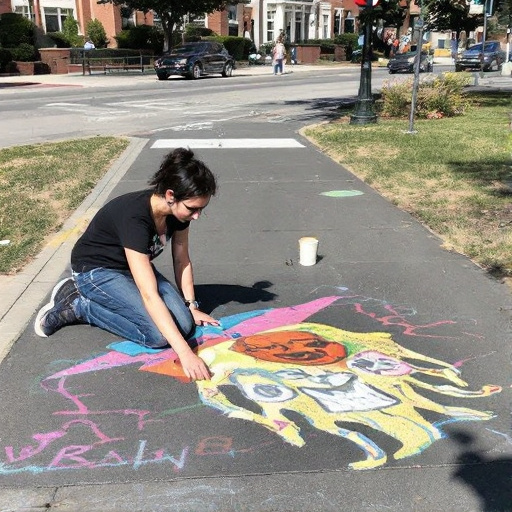Featured Articles
- "Chalk Art and Activism: How Campus Sidewalks Became a Canvas for Expression and Outrage"
- Quiet Quitting: The Unseen Impact of Minimalist Student Engagement on Campus Life Dynamics
- The Forgotten Art of Dining Hall Cuisine: A Culinary Exploration of Campus Life's Hidden Delights
- The Secret Life of Campus Pets: Uncovering the Furry Friends Behind Student Success Stories
- Top 6 Innovative Backpacks for Campus Life Revolutionizing Student Organization and Comfort Since 2019
"Unpacking the Invisible Backpack: How Privilege Shapes Campus Experience in Unexpected Ways"
"Unpacking the Invisible Backpack: How Privilege Shapes Campus Experience in Unexpected Ways"
Privilege operates like an invisible backpack, subtly impacting the campus experiences of students in ways they often may not recognize. By unpacking this concept, we can begin to understand the layers of privilege that influence everything from social interactions to access to resources and academic success.
What Does It Mean to Carry an Invisible Backpack?
The term "invisible backpack" was popularized by educator Peggy McIntosh in her essay "White Privilege: Unpacking the Invisible Backpack." McIntosh describes the backpack as a metaphor for unearned advantages that individuals carry through life based on their identity markers such as race, gender, and socioeconomic status. Imagine stuffing your backpack with advantages like “never being the only person of your race in a room” or “having access to a car when your friend can’t get home.” For students navigating campus life, these privileges—or the lack thereof—shape everything from friendships to academic performance.
A Statistical Snapshot
According to a study by the American Council on Education, students from affluent backgrounds are more likely to complete their degrees. Specifically, 64% of students from high-income families graduate, compared to just 25% from low-income families. We can trace many of the disparities in graduation rates back to the resources available, which are often hidden in the layers of that invisible backpack.
Privilege and Academics
Picture this: it’s midterms week, and your roommate casually breaks out their shiny new laptop to study. Meanwhile, you’re frantically jotting notes on paper because your laptop broke last month, and you still haven’t saved up to replace it. That subtle yet significant difference showcases one way privilege can ripple into academic performance.
Some students enter college with extensive academic support networks—tutoring, test prep courses, and parental guidance that helps them navigate the maze of higher education. Conversely, first-generation college students or those from less economically advantaged backgrounds often must forge their own paths, frequently lacking not only financial aid but also mentorship opportunities that could guide their academic trajectories.
The Social Dynamics of Privilege
When I first stepped onto my university’s campus, I felt like a fish out of water. Growing up in a working-class neighborhood, I didn’t have the social networks that many of my peers seemed to possess. Within my first week, I noticed how effortlessly some students formed study groups, shared resources, and networked at events—all while I floundered about, trying to find my place at the table. This experience opened my eyes to the invisible ways privilege operates in social settings.
One poignant example involves social capital— the connections and networks that individuals can leverage for their benefit. A 2016 study published in the Journal of Higher Education found that social capital directly correlated with student engagement: students with robust connections felt more included and participated more actively in campus life. What does this mean for those not born into privilege? They may initially feel excluded or struggle to build those crucial relationships.
Finding Community Amidst the Struggles
While privilege often creates gaps between students, it can also serve as a catalyst for forming communities dedicated to unpacking those disparities. Diverse student organizations, such as first-generation student networks and LGBTQ alliances, enthusiastically support students who navigate the complexities of identity and privilege. In campus dialogues, members often share stories that reveal the stark differences in experiences, leading to deeper empathy and understanding.
Financial Strain and Mental Health
Money isn’t just a matter of a tuition check; it penetrates every aspect of college life, including mental health. According to the Healthy Minds Study, 39% of college students reported significant psychological distress in 2021, with financial strain serving as a leading contributor. Those unburdened by financial worries may not recognize the fear that another bill or unforeseen expense can strike in individuals carrying the financial weight of college on their backs.
This financial pressure can lead to heightened stress levels, impacting not only performance but also overall well-being. If one student can afford a therapist while another resorts to sporadic counseling from the campus mental health center, the disparities can snowball into larger academic and social implications.
Race, Gender, and Intersectionality
Another layer to consider within the invisible backpack is how race and gender intersect with privilege. Minority students often deal with heightened financial pressures and discrimination, impacting their college experience. According to data from the U.S. Department of Education, graduation rates for Black and Latino students consistently lag behind those of their white counterparts. Addressing these disparities requires acknowledging how race plays a role in educational settings.
Gender dynamics also cannot be overlooked. Women, especially women of color, face unique challenges ranging from sexism in the classroom to limitations in accessing leadership roles on campus. Furthermore, the gender pay gap extends into the realm of higher education; women frequently find themselves navigating financial restrictions while also dealing with the complexities of institutional gender bias.
The Power of Representation
Finding role models who look like you is invaluable. A 2017 study highlighted that students from underrepresented backgrounds perform better when they have at least one professor who shares their racial or ethnic identity. Those connections reinforce the idea that success is attainable, motivating students to persist even when circumstances become challenging.
Taking Action: Strategies for Awareness and Change
How do we move forward? Universities must prioritize creating an inclusive environment. Initiatives such as comprehensive financial aid offerings, mentorship programs, and workshops focusing on diversity and inclusion can help lighten the invisible backpacks of students facing privilege gaps.
Furthermore, student-led efforts to promote awareness are essential. Peer mentorship programs can implement storytelling sessions, where students share their experiences—both positive and negative—demystifying privilege and fostering dialogue within campus communities.
A Humorous Take: The Privilege Olympics
Picture a hypothetical “Privilege Olympics”—a competition where students race through a college campus while carrying varying weights based on their privileges. The rules are simple: contestants must navigate ice skating classes, attend parties with open bars, and finish essays—all while lugging backpacks filled with “Not a care in the world,” “Access to resources,” and “Made connections effortlessly” stickers. Spoiler: the gold medal inevitably goes to the contestant with the lightest load, who breezes through these challenges while others struggle beneath the weight of their invisible cargo.
Conclusion: Embracing Intersectionality and Allyship
As we conclude, it’s crucial to underscore that privilege is multi-faceted; it varies significantly based on identity. From race to gender to socioeconomic status, unpacking the invisible backpack allows us to appreciate the complexities within the student experience. Acknowledging privilege is not about guilt; rather, it’s an opportunity to foster allyship, collaboration, and understanding among students from all backgrounds. We have the chance to create a more equitable and inclusive campus environment, but that requires all of us to slide our backpacks aside and work together.
So, the next time you step on campus, take a moment to consider what might be in your invisible backpack. And while you’re at it, think about how to help your peers unpack theirs, too. The power of privilege is significant, but together, we can turn the tide towards a more inclusive and supportive educational experience.




